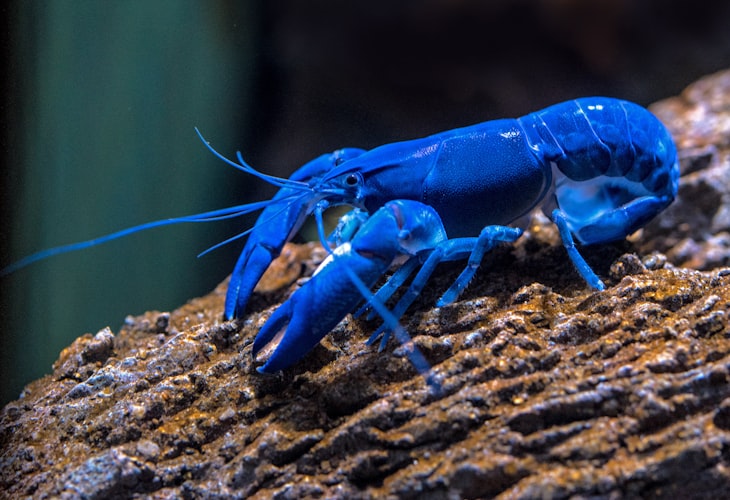 |
| Blue Lobster Side View |
Homarus gammarus is a large crustacean, with a body length up to 60 centimetres (24 in) and weighing up to 5–6 kilograms (11–13 lb), although the lobsters caught in lobster pots are usually 23–38 cm (9–15 in) long and weigh 0.7–2.2 kg (1.5–4.9 lb).Like other crustaceans, lobsters have a hard exoskeleton which they must shed in order to grow, in a process called ecdysis (moulting).This may occur several times a year for young lobsters, but decreases to once every 1–2 years for larger animals.
The first pair of pereiopods is armed with a large, asymmetrical pair of claws.The larger one is the "crusher", and has rounded nodules used for crushing prey; the other is the "cutter", which has sharp inner edges, and is used for holding or tearing the prey.Usually, the left claw is the crusher, and the right is the cutter.
The exoskeleton is generally blue above, with spots that coalesce, and yellow below.The red colour associated with lobsters only appears after cooking.This occurs because, in life, the red pigment astaxanthin is bound to a protein complex, but the complex is broken up by the heat of cooking, releasing the red pigment.
The closest relative of H. gammarus is the American lobster, Homarus americanus. The two species are very similar, and can be crossed artificially, although hybrids are unlikely to occur in the wild since their ranges do not overlap.The two species can be distinguished by a number of characteristics:
The rostrum of H. americanus bears one or more spines on the underside, which are lacking in H. gammarus.
The spines on the claws of H. americanus are red or red-tipped, while those of H. gammarus are white or white-tipped.
The underside of the claw of H. americanus is orange or red, while that of H. gammarus is creamy white or very pale red.
One of these blue lobsters finally posed for me at the Cairns aquarium.
Copyright
David Clode
Location
Cairns Aquarium, Cairns City, Australia
Download Full-Res Image



